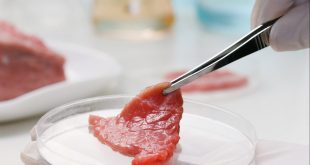By Rafaela Gutierrez and Chelsea M. Rochman, U of T Trash Team, University of Toronto
Every year, global citizens take to the streets to pick up plastic littering our environment. People bend down to collect plastic straws, chip bags, cigarette butts and bottles, among other items—many of which are food packaging. In fact, for the first time, plastic food wrappers became the top item picked up during Ocean Conservancy’s International Coastal Cleanup in 2020. Volunteers tallied a total of 4.8 million plastic food wrappers, which does not include the 1.9 million plastic beverage bottles, 1.5 million plastic bottle caps, and 942,992 plastic straws and stir sticks.
If not collected, littered plastic items break down into microplastics (i.e., < 5 mm), which are ubiquitous in rivers, lakes and oceans—including in the Canadian Arctic and in our Great Lakes. Microplastics are recorded in the stomachs of Arctic seabirds and freshwater fish—with reports of 900 pieces of plastic in a single fish from Lake Ontario. Moreover, we are consuming microplastics via drinking water, seafood, and the house dust that falls onto our food as we eat.
How did we get here?
Increasing plastic production used in nearly every sector, combined with unsustainable use and insufficient waste management, has facilitated our current situation. Plastic is a useful material, but we have been overusing it and treating it as an invaluable material when it becomes waste.
A look at the packaging industry
In Canada, single-use packaging accounts for almost 50 per cent of our plastic waste. This includes a lot of materials used within the food and beverage sector, including items that are used for a few minutes and then discarded. Think plastic straws, stir sticks, cutlery, takeout containers, and those plastic toppers added to your coffee cup lid to keep your drink warm for a few minutes longer.
To reduce plastic waste, Canadian governments are focused on reducing single-use foodware. The federal government introduced a single-use regulation that bans plastic cutlery, stir sticks, straws, bags, and non-recyclable takeout containers. The City of Toronto also introduced it’s a Single-Use and Takeaway Items Reduction Strategy that aims to reduce plastic and non-plastic single-use foodware. This municipal program, currently in a voluntary phase, encourages food service businesses to only provide accessories (e.g., straws, utensils, condiments) upon request and to allow customers to bring their own reusable cups and containers. To reduce plastic food packaging pollution, these policies need to be successful. Success includes a cleaner environment, but also prosperous businesses and happy customers. To inform effective strategies, we (at the University of Toronto Trash Team) are evaluating businesses and customer practices, as well as increasing our understanding of the challenges and opportunities for decreasing single-use items and shifting to reusable alternatives.
What we’ve learned
So far, we have learned that businesses are interested in and willing to shift to reusable foodware, and that customers support actions to reduce single-use. We asked businesses what support they needed to participate. Local businesses want more access to information and guidance on public health, and they want resources to guide affordable alternatives. Additionally, businesses want practical help to purchase reusables, train staff, and educate customers.
Customers want businesses to do more to reduce waste and support practices that conveniently incentivize their use of reusables on-site and allow them to bring their own cups and containers. Customers also want information about actions they can take to help.
To demonstrate the value of shifting practices, we calculated how much single-use foodware can be avoided (and money saved). Our model includes 45 restaurants and cafes in Toronto, and we assessed several different actions to reduce. For example, if all 45 businesses only distributed accessories upon request, they would reduce their annual single-use foodware by more than two million items and save roughly $60,000. The use of plastic packaging in the food sector is significant, and moving away from single-use items can decrease waste and save money—a win-win.
Circular transition
We need businesses, governments, and the public to work together to shift to a circular economy, where less plastic waste is produced and thus available to be littered. For food service businesses, there is willingness to act. To facilitate this transition, we must support cafes and restaurants to help them scale up reusable options while sustaining their businesses and customer loyalty. Reducing single-use foodware can make a positive difference for people, the planet, and profit.
Founded in 2017 in collaboration with the Rochman Lab, part of the Department of Ecology and Evolutionary Biology at the University of Toronto, The U of T Trash Team is a science-based community outreach organization made up of undergraduate and graduate students, postdocs, researchers, local volunteers and staff, all working together with a common goal to increase waste literacy in our community while reducing plastic pollution in our ecosystems.
 Canadian Food Business
Canadian Food Business




